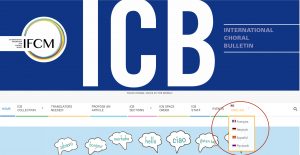Ки Адамс
В беспрецедентное время пандемии коронавируса обычный рабочий режим всех представителей хорового сообщества сильно изменился. Хоровым организациям приходится принимать трудные решения: как безопасно репетировать/выступать, как минимизировать риски, как поддерживать финансовую стабильность, как оставаться на связи с попечителями/спонсорами/аудиторией и как планировать следующий сезон. Тем не менее, Covid-19 вдохновил хоровые организации выйти за рамки того, что они всегда делали, и подтолкнул их к тому, о чем бы они никогда не подумали до пандемии. В этой статье освещаются творческие проекты, реализованные четырьмя канадскими хоровыми организациями, которые адаптировались к переменам и успешно развиваются. Этими проектами являются:
- электроакустическое произведение/выступление, которое фактически возвращает певцов в их собственные хоровые пространства;
- совместный проект 10 композиторов с текстами об эмоциональном фоне и новой моделью краудфандинга;
- программа трёх женщин-композиторов, основанная на истине в эпоху “фальшивых новостей” и теорий заговора;
- международное сотрудничество, объединяющее две формы искусства и основанное на теме надежды, воплощенной в конечном возвращении света.
Вместе канадский сектор хорового искусства переосмысливает общение и сотрудничество нашего хорового сообщества.
Перевод с английского языка: Елена Ещенко
Уважаемый читатель, если Вы хотите прочитать эту статью целиком, её полный текст доступен на английском, испанском и французском языках. Вы можете выбрать удобный Вам язык, щёлкнув на флажок в крайней правой вкладке главного меню.



1 Comment